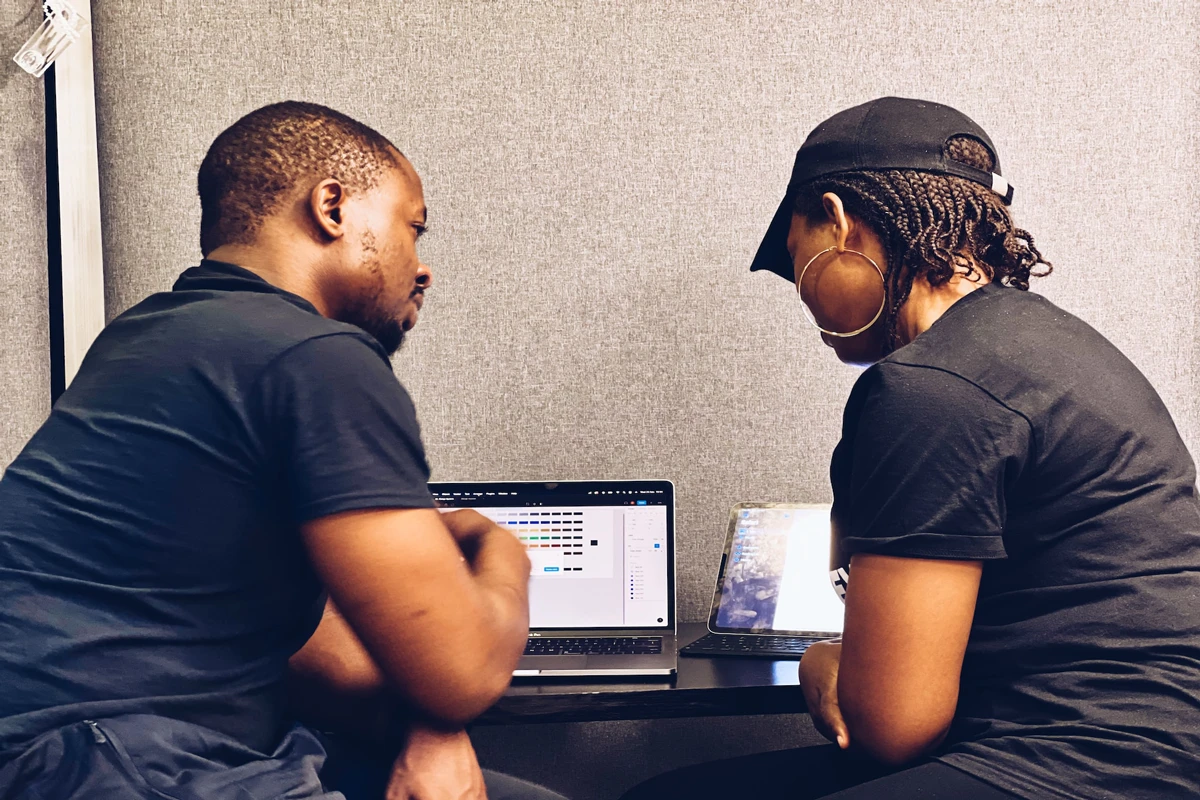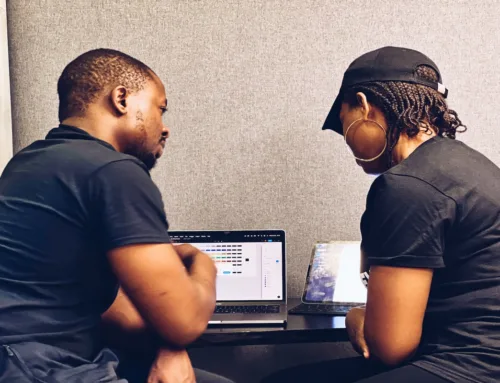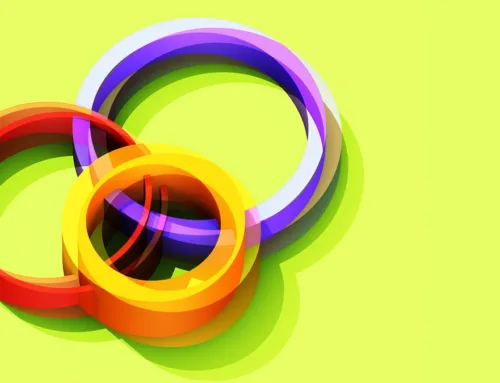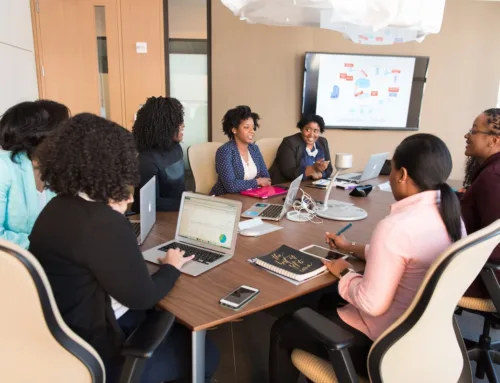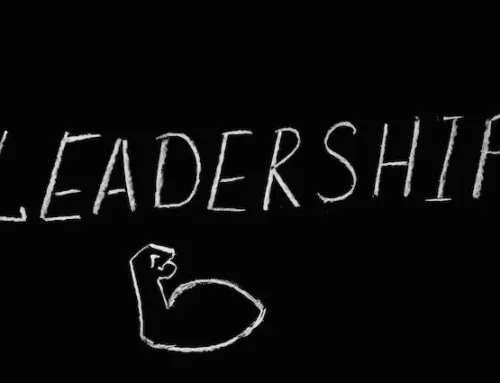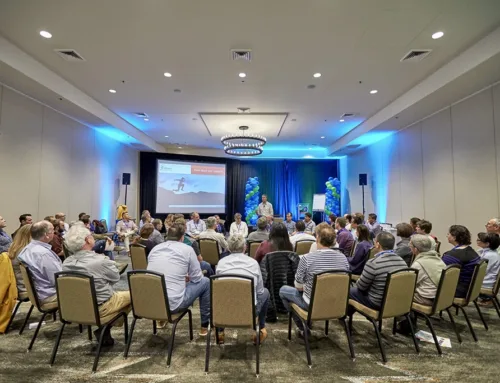A Personal Odyssey From CEO, Bill John:
Before we left, I suspected it was going to be life changing but I really had no idea. It was my wife, Amy’s, suggestion, and with copious amounts of butt-time on airplanes, I had accumulated enough miles to take our family to Africa.
It was our first time on the continent and we chose South Africa’s Greater Kruger National Park as our safari destination. Upon arrival into the low veld, the manager of Umlani Bush Camp, David Hollingworth, took aside our boys and said: “The hyenas WILL target YOU. Stay near your parents and absolutely NO RUNNING in camp.”
We’re Not In Kansas Anymore
Liam and Luke, 12 and 14 respectively, were listening. This was BIG 5 country, (Lion, Leopard, Elephant, Rhino and Cape buffalo), not to mention
the deadly things that crawl and slither. I knew we were not in Kansas (or Alameda), anymore. What followed were 20 days immersed in the African bush with all the animals that, until then, were memories of childhood visits to zoos and nature channels on television.
I have been fortunate to travel the world with Odyssey Teams but nothing has remotely come close to the feeling of being in this kind of wild – this kind of connected – to nature and to my family. It is raw and not arrogant. It is re-affirming that nature-made is supremely more impressive than man-made. Unless of course, it is our nature to make such impressive things as those we have.
How could I have imagined the rosettes on a leopard moving through dry, blonde grass? Or, the horns of a kudu in perfectly twisted symmetry; or, the smell of potato bush while tracking lions? I couldn’t. And that was fine. But after experiencing it, it would not be okay if the experience faded as merely “a trip-of-a-lifetime”, or a bucket list item to check. There had to be more. Much more.
My Camera Unleashed An Obsession
So, I shouldn’t have been surprised when Amy suggested I buy a nice camera for the trip. I knew this would be my only chance to save some of these experiences and minimize the void that we would experience after the trip was finished. I didn’t know that a camera would unleash such an obsession – to convey the beauty of these animals, their habitat, and our experience with them.
My shutter has opened and closed over 30,000 times during more than a thousand hours of game drives spanning eight trips since our first. Some of these images I am really lucky to have captured and some that required a lot of preparation. But they are not perfect. Not one out of 30,000. For me, it is the aim of the ‘perfect shot’ that is eternally haunting and causes Amy to tease me. I know ‘perfect’ does not exist but it is the pursuit that makes it so fun. Beyond photography, the African bush has been a powerful classroom for all of us. None more so, however, than my son, Liam (now 19).
Liam returned to attend Safari guide school in South Africa and Botswana for the past year and a half. He is now a certified FGASA (Field Guide Association of Southern Africa) Safari guide interning at a lodge in the Thornybush Game Reserve called ‘Jackalberry Ridge’. It is a stunning lodge. His stories and experience are something of which I could not be more proud. And relieved. He has slept with lions surrounding his tent; survived a Mozambique spitting cobra INSIDE his sleeping bag; has been charged by a cape buffalo on foot; watched elephants completely shred a tent next to his; and can identify nearly a hundred African bird species just by their call (chirp). His knowledge of mammals, amphibians, insects, stars, and more is astounding.
How The African Bush Changed Us
We all have changed, individually and together. The African bush has taught us about our nature and the close proximity we have to all things wild, inside and out. I don’t think anyone can see these animals – the big iconic ones, and the lesser-known, without wanting to ensure they remain for others to see. They all belong. And so do we. Our nature must recognize that we have the capacity to eliminate many of them in less than a generation and all of them in just a few if we don’t create more awareness of their struggle. We don’t need to apologize for our own nature, we just need to allow more of it back into us.
This can only come from seeing them, knowing them, and loving them. We need to do the same for each other as well. This is where a slow convergence between my passion for the work we do at Odyssey and Africa have been colliding. There is more to come. Much more. But for now, I leave you with these images, a behind the scene description and some facts that I hope inspire you to make your way to the cradle of mankind where you are still on the menu. Just don’t RUN!
Roar!
Bill
For more on Bill John’s personal odysseys and LIVE programs with Odyssey Teams, please reach out to us at learn@odysseyteams.com
Download High Rez African Safari Photos
Behind the scene: On a drizzly morning, we tracked this female leopard weaving through a Mopani thicket. She decided to have a rest in a bush not ten feet away. To assist her hunting prowess, she. rolled on a scent that might disguise her own and then looked up for this shot. I have been in love ever since. She graces the wall in my office on a three by four foot canvas.
Leopard facts:
1) Primarily solitary except when mating and females with cubs.
2) Able to climb vertically with prey that outweighs them
3) The rosettes (patterns) on a leopard are unique like fingerprints and are used primarily as camouflage.
4) Between 2005-2014, at least 10,191 individual leopards were traded internationally as hunting trophies, with the U.S. as the top importer (accounting for 45 percent of this trade).
5) Sub-Saharan Africa leopard populations have declined by more than 30 percent in the past 25 years. ONE THIRD. GONE.
For the photo geeks: Canon 5diii 1/200 th , F4.5, off-camera flash, ISO 100, 300mm prime.
Location: Kambaku Safari lodge, Timbavati Nature Reserve, Greater Kruger National Park, South Africa.
African Elephant – Loxodonta Africana
Behind the scene:
We decided to check out ‘Sunset Dam’ for our morning coffee to find it was bath time for the big boys. The sun was in our eyes, still on its morning climb. I knew it would be great light against all the splashing. Not much lifts the mood like watching ellie’s in the water.
Elephant Facts:
1) The big boys tip the scales at 12,000 pounds
2) The trunk has over 40,000 muscles. Some studies suggest 150,000! Compare that to the entire human body with 639.
3) It takes an elephant toddler over a year to gain coordination of all those trunk muscles. That’s a lot of processing to figure out and adorable to watch.
4) Poachers kill an African Elephant every TWENTY SIX minutes
5) Some reports in East Africa suggest populations have been reduced by 50% in the last decade.
For the photo geeks: Canon 5diii 1/500 th , F5, ISO 500, 300mm prime
Location: Kambaku Safari lodge, Timbavati Nature Reserve, Greater Kruger National Park, South Africa.
Behind the scene: Our guide, JJ and tracker, Renius, found a big resident male they called ‘Pretty Boy’. He was magnificent. One of the most beautiful males we had ever come across. Amy and I were shocked to learn when we returned a year later that ‘Pretty Boy’ had met his end by a bullet. It took the breath out of us. In processing this photograph, I intentionally de-saturated all the color from ‘Pretty Boy’ except his eyes that are as real as when he stared at us. Without color and life elsewhere, his eyes now look like the fake glass that he wears on the wall of some hunter’s ‘trophy’ room. This should never have happened in a
protected wildlife reserve.
Lion facts and musings:
1) The only social big cat. Prides can exceed 50 individuals
2) The roar of a lion can be heard as far as 5 miles. The loudest of all cats.
3) Males can exceed 500 pounds.
4) NEVER be enticed to ‘Pet a lion cub’. The insatiable cuteness of these cubs draw tourist who want to pet them. Operators need a constant supply of cubs. As they age-out of cute, pet-ability, they are sold to farms, ‘released’ and shot by ‘hunters’.
5) 200,000 lions roamed Africa a century ago. Now 26 countries across the continent have lost all of them. A staggering 43 percent has been lost in the last two decades.
For the photo geeks: Canon 5diii 1/320 th , F5, ISO 1000, 200mm (70-200mm)
Location: Kambaku Safari lodge, Timbavati Nature Reserve, Greater Kruger National Park, South Africa.
Cape Buffalo – Syncerus Caffer
Behind the scene: My son, Liam, and I went out for a morning self-drive. We crested a hill to find a small herd of about 30 Cape buffalo lying in the dry grass chewing their cud. Golden light was hitting this gentleman with a very unique blonde coloring to his goatee. It was hard not to include his onyx eyes, floppy ears and horns in the shot. But it just seemed to lose the focal point of this unique gift to his face.
Cape Buffalo facts and musings:
1) The cape buffalo put Kruger National Park on the safari map with the infamous ‘Battle at Kruger’, one of the first viral videos on the internet. That battle showed the durability and protective nature of this iconic bovine.
2) When bulls start losing mating battles as they age, they elect to strike out on their own as ‘dagga boys’. Without the protection of the herd, they become less obvious and more dangerous to those who might encounter them on foot – like we did one dark morning walking from our rondavel (hut) to the boma m. (Reed/Stick shelter w/fire). Nearly had a heart attack.
3) Part of the Big 5, a term given to the five most dangerous animals to hunt on foot.
4) Like a Boss! The thick part of the horn that covers the forehead is called the ‘Boss’. Big bulls can weigh 2,000 pounds. No wonder the name.
5) Drought affects bovines hard. As the wet season shifts to dry, grasses lose their nutrition and the daily water required by the buffalo begins to dry up. This compounding affect saw a 50% mortality rate in parts of Kruger National Park in 2016-2017
For the photo geeks: Canon 5diii 1/320 th , F5, ISO 1000, 200mm (70-200mm)
Location: Wisani Lodge, Olifants West Nature Reserve, Greater Kruger National Park, South Africa.
Hippopotamus – Hippopotamus Amphibious
Behind the scene: I didn’t go for the iconic shot of his mouth open to 150 degrees and nearly four feet between the lips. Rather, this shot showcases how goofy and ominous they look at the same time. During the evening’s golden hour, this brute was waking up. Lain Hensley and family were with us on this trip and sighting. Sightings with good friends are always better.
Hippopotamus facts and musings:
1) The Greek name means ‘River Horse’. In Afrikaans ‘Seekoi’ translates to ‘Sea Cow’.
2) The closest living relatives are whales and dolphins.
3) A hippos pink skin is attributed to a natural sunscreen it secretes.
4) *The Hippo wins Africa’s deadliest animal in most studies.
5) A hippos bedroom is the water, or nearby bank, as it sleeps most of the day. Nighttime is grazing time. As far as 10 kilometers of it. If you are between a hippo and his bedroom, see #4.
* The mosquito would take the number one position, however, it’s only a vector of the protozoa which does all the deadly work in Malaria.
For the photo geeks: Canon 5diii 1/1600 th , F4, ISO 800, 300mm Prime + 1.4 teleconverter
Location: Kambaku Safari lodge, Timbavati Nature Reserve, Greater Kruger National Park, South Africa.
Greater Kudu – Tragelaphus strepsiceros
Behind the scene: Lain, his daughter Taylor and I went on a self-drive on the “tar-road” in Timbavati to hunt and shoot Lilac-Breasted Rollers, one of the most breath-taking birds of Africa. Instead, we came across one of the most breathtaking antelope in Africa, the Greater Kudu. With the foreground of an impala to give scale of how big this bull was and the winter leaves of the Mopani bushes as a backdrop, the scene was ripe for a shot.
Kudu facts and musings:
1) The Kudu horns are the iconic symbol of Kruger National Park’s
emblem/logo
2) The horns begin to grow between six and twelve months of age and make a turn approximately every two years. An old bull may attain three turns.
3) Unfortunately for Kudu, they are delicious. Only 118,000 remain in the wild and are on the ‘near threatened conservation status’
4) Tragelaphus strepsiceros was NOT easy (for me) to memorize when studying mammals of Africa with Liam.
5) Those ears! The bush is usually full of sounds. Hundreds at a time – with birds, insects, other animals walking and more. How it can
decipher a human foot, like mine softly touching down 200 meters away, trying to get closer for a photograph is nuts.
For the photo geeks: Canon 5diii 1/800 th , F4, ISO 800, 300mm Prime + 1.4 teleconverter
Location: Kambaku Safari lodge, Timbavati Nature Reserve, Greater Kruger. National Park, South Africa.
Rhinoceros – Diceros bicornis (Black Rhino) and Ceratotherium simum (White Rhino)
Behind the scene: I am including two photos of Rhino, one of each species.
The Black Rhino: To give you an idea of how endangered and rare these souls are, we invited our favorite guide and friend, JJ Oosthuizen, to join us in the Balule Nature Reserve at the chance to spot a black rhino. He is a full time guide in the Timbavati Nature Reserve and does morning and evening safari drives with guests every day for six weeks in a row before a two-week break. He has done this for the past twelve years and has NEVER seen a black rhino. After two days in our reserve, with me as guide-in-training and JJ as guest, he spotted two large boulders off in the distance. He looked twice, three, four times with his binos and proclaimed ‘Rhino’! We bounced along for nearly a kilometer. As we got closer, JJ’s confidence grew that not only were they rhino but they were BLACK rhino. And not only was it TWO black Rhino but it was a mother and calf. As we approached even closer with JJ jumping up and down, a third black rhino came out of the bushes – the presumed, Father! We were all just about in tears as we sat with them for about 20 minutes. Zooming in to photos we noticed blood dripping down below the males back horn. Looking even closer revealed the ghastly mark of a poacher’s saw that somehow got stopped short of its grisly mission. This glorious beast survived odds that have been stacking against him for a long time.
White Rhino in blue: JJ found this white rhino in the Timbavati Nature reserve when he was driving us. In post-processing, I dropped the temperature into the blue spectrum to bring the color of sadness that surrounds the plight of this ancient warrior. The light was stunning, highlighting the scimitar-shape of his massive horn. It was golden light, possibly a more fitting color with it’s value exceeding that of gold itself. Not a true value, a mythical, man-made perversion of it.
Rhino facts and musings:
1) The most telling difference between the too species is the shape of the lips/mouth. The white rhino has a ‘wide’ mouth, perfect for grazing. Some say ‘white’ comes from the Dutch word wijde which means wide. The black rhino has a narrower jawline and lips designed for browsing.
2) A staggering 98% of black Rhinos were killed by us in the last century.
3) Small progress was made. In 2007, 26 rhino were killed in South Africa. However, each year since 2013 over 1,000 rhinos were poached every year and continuing today. Three every day in a population that is already critically endangered.
4) Not like rabbits. The gestation period is between 419 and 478 days, with an average interval of 2.5-3.5 years between calves.
5) An enormous amount of dedication, risk, energy, money and love is the only thing to save them.
For the photo geeks: Rhino in Blue – 1/1000 th , F4, ISO 800 300mm prime w/1.4 teleconverter. Black Rhino – 1/2000 th , F4, ISO 400 300mm prime w/1.4 teleconverter.
Location: Rhino in Blue – Timbavati Nature Reserve, Greater Kruger National Park, South Africa. Black Rhino – Balule Nature Reserve.
Burchell’s Zebra – Equus quagga burchellii
Behind the scene: There are several ‘gates’ (entry points) into Kruger National Park. One. of our favorites is ‘Orpen’. Within the first 10 kilometers it is just magic. Loaded with plains game due to the sweet grass that occurs there. It is a bonanza of photographic opportunities and since it’s usually our first point of entry after missing the bush for months on end I am just trigger-happy. One of the most photogenic of them all is the zebra with it’s black and white lines that take your eyes all over the place. It’s hard to pick a favorite zebra shot but I always smile when seeing this one with three red-billed oxpeckers living up to their reputation.
Zebra facts and musings:
1) Zebras and rhinos share an interesting characteristic of being the only three toed (perissodactyla) ungulates on the continent. The rhino retains all three toes, while the zebra lost the majority of it’s two outer toes over time. Only little vestigial toes exist. That middle toe is what we call the hoof!
2) Those dizzying lines bring enough confusion to predators allowing them to escape. Most of the time.
3) Ever noticed that not many cowboys ride zebras? That has never worked out well. Kicking, biting and not sticking around when predators, including the bipedal ones with forward facing eyes are near (us). So cool to be wild.
4) Zebras are hind-gut fermenters. Big farters, just like their horse cousins. Their plains cousins, however, the antelope and giraffe all ruminate and chew their cud. Not nearly as funny when they take off for a run!
5) Two of the tree species of zebra are in trouble with declining populations. Grevy’s zebra is endangered. Mountain zebras are vulnerable. The plains (Burchell’s) zebra is doing okay but are trending for trouble as well.
For the photo geeks: Canon 5diii 1/1600 th , F4, ISO 800, 70-200mm + 1.4 teleconverter
Location: Orpen Gate, Kruger National Park, South Africa.
Nile Crocodile – Crocodylus niloticus
Behind the scene: One of the most magnificent bird-hides in Kruger Park is Lake Panic. I could sit there for days and days shooting birds and other critters that come to drink. I am not sure how it got its name but a few years ago, there was a real PANIC when a croc took a poor lad “looking for golf balls”. The croc in this shot performed a territorial display I had not seen before that ended in a pose with his tail curved and absolutely still for 4-5 seconds before it disappeared without a ripple.
Croc facts and musings:
1) The bigs exceed 16 feet!
2) Millions of years without the need to evolve its form
3) The incubation temperature of the eggs determines male and females.
4) ‘Grip it and rip it’ isn’t just a golf phrase but a culinary necessity for crocs. It does not chew. Sadly the golfer mentioned above both delivered and received this cruel phrase.
5) Crocs are the only animal in this blog with a conservation status of ‘least concern’. Not a good mindset though when retrieving golfballs.
For the photo geeks: Canon 5diii 1/100 th , F4, ISO 1600, 300mm prime + 1.4 teleconverter
Location: Lake Panic, Kruger National Park, South Africa.

